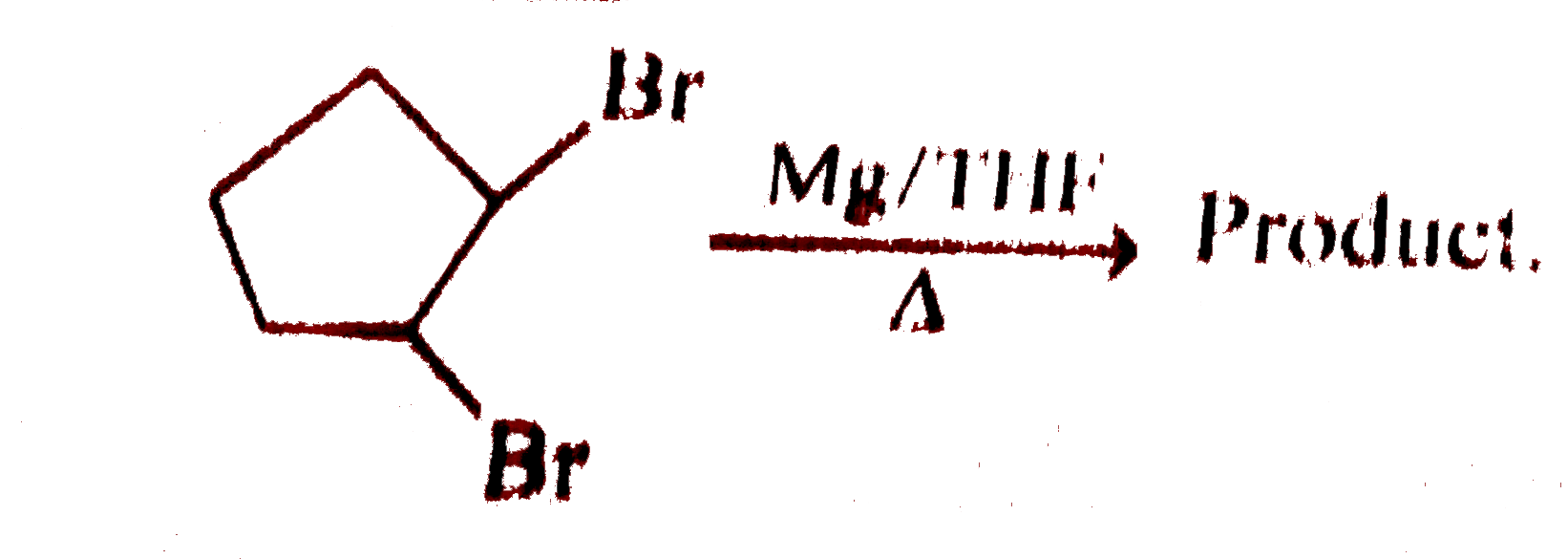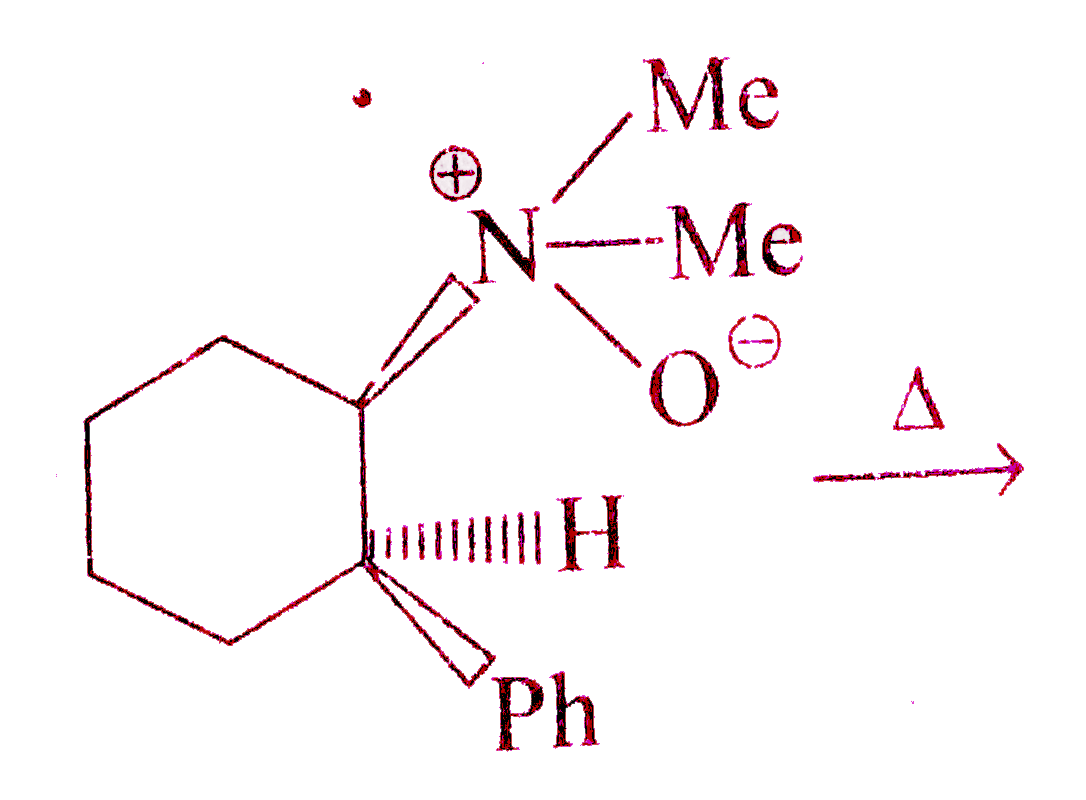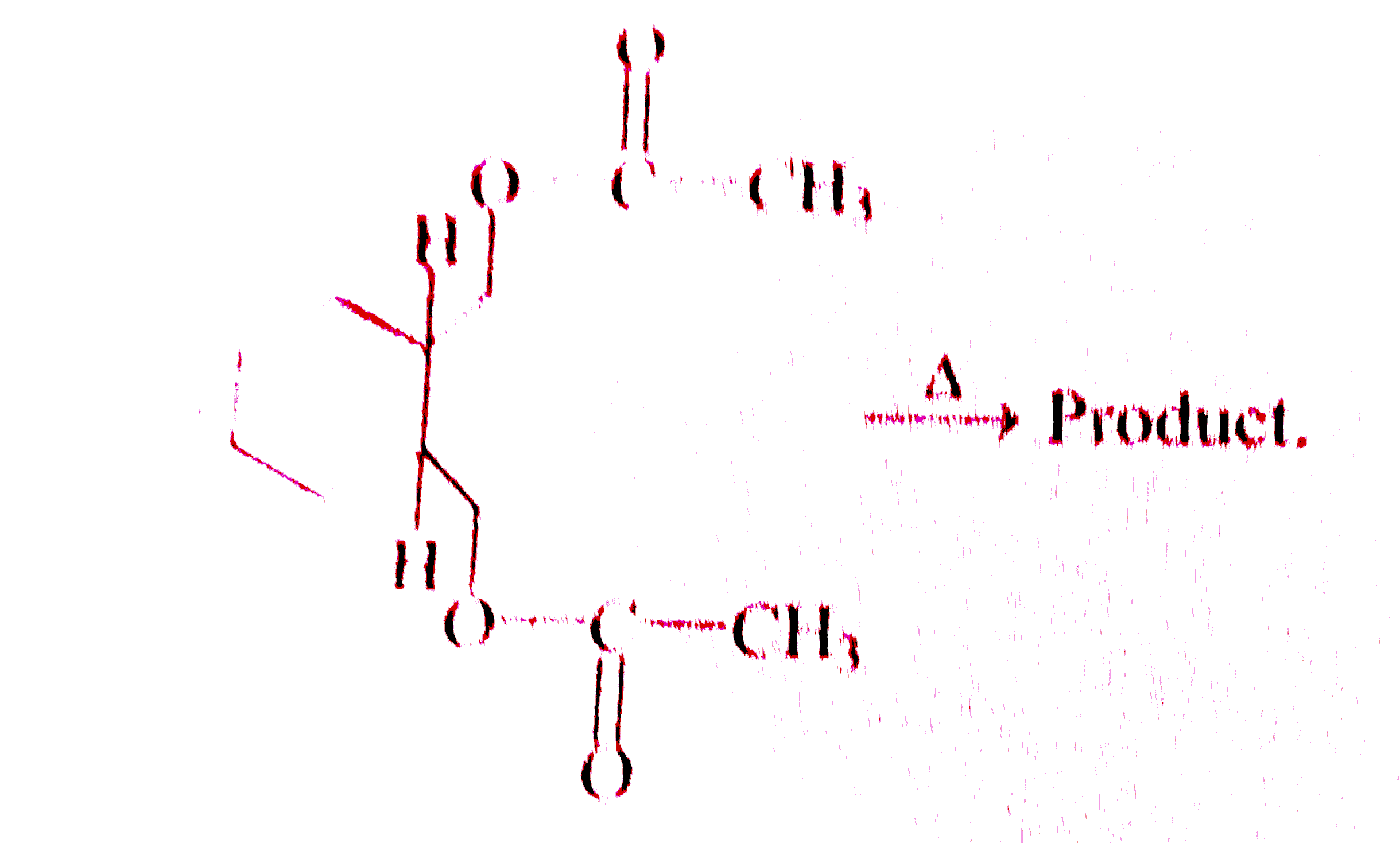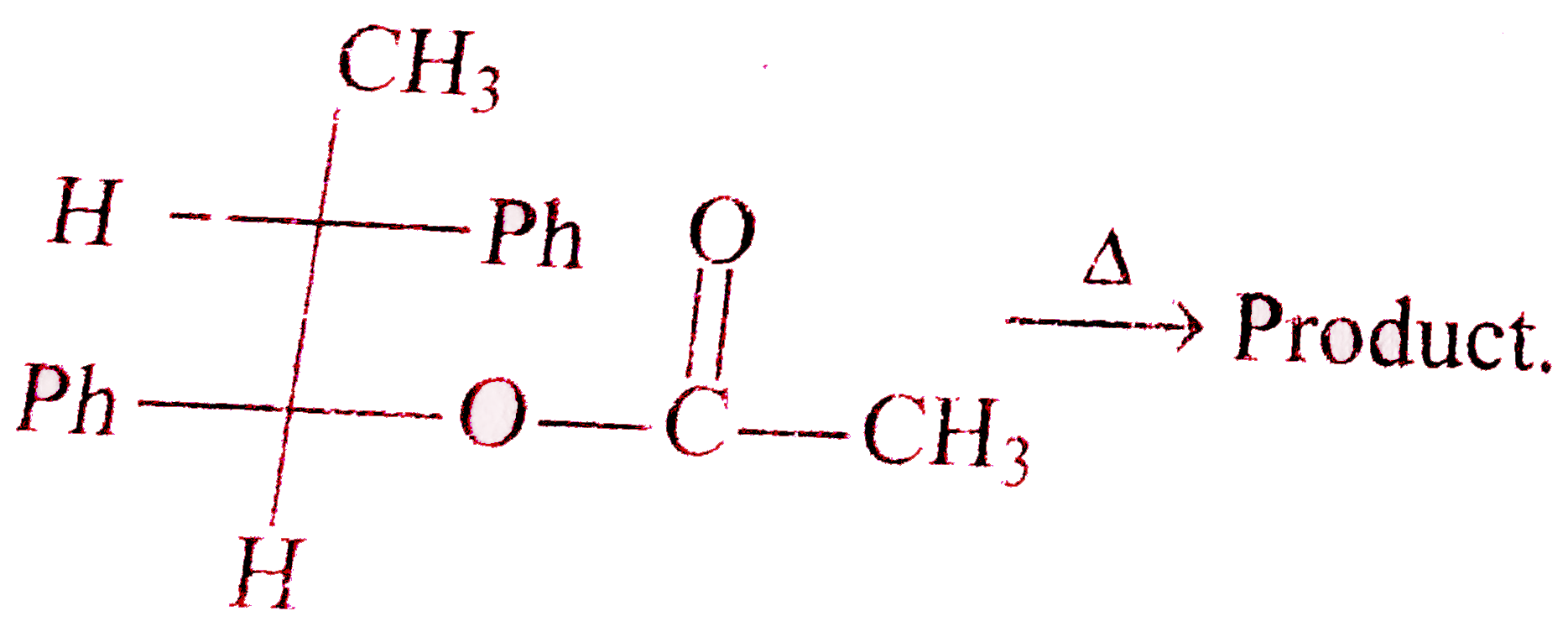Complete Solutions to Linked Comprehension Type (Q.1 To Q.25) of chapter HALIDES of Class 12 book with complete answers and questions
| Class 12 | CHEMISTRY |
| Chapter | HALIDES |
| HIMANSHU PANDEY | Linked Comprehension Type (Q.1 To Q.25) |
| Number Of Questions | 25 |
| Academic Year | 2023-24 |
Optically pure `(S)-(+)`-2bromo octane `[alpha]_(D)^(25^(@)C)=+36^(@)`, react with aqueous NaOH in acetone to give optically pure `(R)-(-)`-2-octanol `[alpha]_(D)^(25^(@)C)` `=-10.3^(@)`. With partially racemized bromo compound whose `[alpha]_(D)^(25^(@)C)`=30^(@)`, the `[alpha]_(D)^(25^(@)` of the alcohol product is - `6.0^(@)`.
Calculate the per cent optical purity of partially racemized bromo compound :
View SolutionOptically pure `(S)-(+)`-2bromo octane `[alpha]_(D)^(25^(@)C)=+36^(@)`, react with aqueous NaOH in acetone to give optically pure `(R)-(-)`-2-octanol `[alpha]_(D)^(25^(@)C)` `=-10.3^(@)`. With partially racemized bromo compound whose `[alpha]_(D)^(25^(@)C)`=30^(@)`, the `[alpha]_(D)^(25^(@)` of the alcohol product is - `6.0^(@)`.
Calculate the precentage of racemization :
View SolutionOptically pure `(S)-(+)`-2bromo octane `[alpha]_(D)^(25^(@)C)=+36^(@)`, react with aqueous NaOH in acetone to give optically pure `(R)-(-)`-2-octanol `[alpha]_(D)^(25^(@)C)` `=-10.3^(@)`. With partially racemized bromo compound whose `[alpha]_(D)^(25^(@)C)`=30^(@)`, the `[alpha]_(D)^(25^(@)` of the alcohol product is - `6.0^(@)`.
Calculate the percentage of frontside attack :
View Solution`R-X+Mgoverset(Ether,Delta)rarroverset(delta-)R-overset(delta+)Mg-X` Grignard reagents may be prepared from `1^(@) , 2^(@)" and "3^(@)` halides as well as from vinayl and aryl halide. Vicinal dihalide and those halide which contain acidic tail do not form Grignard reagent.
Which of the following halides is most reactive for the preparation of Grignard reagent?
View Solution`R-X+Mgoverset(Ether,Delta)rarroverset(delta-)R-overset(delta+)Mg-X` Grignard reagents may be prepared from `1^(@) , 2^(@)" and "3^(@)` halides as well as from vinayl and aryl halide. Vicinal dihalide and those halide which contain acidic tail do not form Grignard reagent.
Which of the following compounds can form Grignard reagent on reaction with Mg//Ether?
View Solution`R-X+Mgoverset(Ether,Delta)rarroverset(delta-)R-overset(delta+)Mg-X` Grignard reagents may be prepared from `1^(@) , 2^(@)" and "3^(@)` halides as well as from vinayl and aryl halide. Vicinal dihalide and those halide which contain acidic tail do not form Grignard reagent.
 Product
Product
Identify structure of product :
View SolutionSince, Grignard reagents resemble carbanion, so they are strong nucleophile and strong base. Their most useful nucleophilic reaction is addition to carbonyl group.

Which of the following compounds will not give acid-base reaction with RMgX?
View SolutionSince, Grignard reagents resemble carbanion, so they are strong nucleophile and strong base. Their most useful nucleophilic reaction is addition to carbonyl group.

Which of the following compounds give racemic mixture on reaction with `H_(3)C-MgBr`?
View SolutionSince, Grignard reagents resemble carbanion, so they are strong nucleophile and strong base. Their most useful nucleophilic reaction is addition to carbonyl group.

Arrange the following compounds in decreasing order of nucleophilic addition reaction :

View SolutionConsider the following sequence of reaction.

Find structure of compound A :
View SolutionConsider the following sequence of reaction.

Find structure of compound 'C' :
View SolutionConsider the following sequence of reaction.

`Coverset(CF_(3)CO_(3)H)rarroverset(H^(oplus//H_(2)O))rarr(X),` Identify correct structure of (X):
View SolutionWilliamson synthesis is an important method for the preparation of symmetrical and unsymmetrical ether. In this method halide is allowed to react with alcohol in presence of Na or K metal.
`R-OH+R'-Xoverset(Na or K)rarrR-O-R'`

`3^(@)` halides and aromatic halides no not give this reaction.
Find out the product of the following reaction :
` `
View SolutionWilliamson synthesis is an important method for the preparation of symmetrical and unsymmetrical ether. In this method halide is allowed to react with alcohol in presence of Na or K metal.
`R-OH+R'-Xoverset(Na or K)rarrR-O-R'`

`3^(@)` halides and aromatic halides no not give this reaction.

Find out A and B :
View SolutionWilliamson synthesis is an important method for the preparation of symmetrical and unsymmetrical ether. In this method halide is allowed to react with alcohol in presence of Na or K metal.
`R-OH+R'-Xoverset(Na or K)rarrR-O-R'`

`3^(@)` halides and aromatic halides no not give this reaction.
`CH_(3)CH_(2)OH+CH_(3)-overset(CH_(3))overset(|)underset(CH_(3))underset(|)C-Cloverset(K)rarr` Major product :
View SolutionAliphatic nucleophilic substitution is mainly of two type `S_(N^(1))" and "S_(N^(2)) . S_(N^(2))` reaction proceed with strong nucleophile in polar aprotic solvent. `3^(@)` halides do not give `S_(N^(2))` reaction. Inverted products are obtained in this reaction and mechanism of reaction occurs through the formation of transition state.
`S_(N^(1))` reaction proceed through the formation of carbocation in polar aprotic solvent. Solvent itself acts as nucleophile in this reaction. Racemization takes place in `S_(N^(1))` reaction.
Which of the following compounds will give `S_(N^(1))` reaction ?
View SolutionAliphatic nucleophilic substitution is mainly of two type `S_(N^(1))" and "S_(N^(2)) . S_(N^(2))` reaction proceed with strong nucleophile in polar aprotic solvent. `3^(@)` halides do not give `S_(N^(2))` reaction. Inverted products are obtained in this reaction and mechanism of reaction occurs through the formation of transition state.
`S_(N^(1))` reaction proceed through the formation of carbocation in polar aprotic solvent. Solvent itself acts as nucleophile in this reaction. Racemization takes place in `S_(N^(1))` reaction.
Which one of the following will give racemised product in `C_(2)H_(5)OH`?
View SolutionAliphatic nucleophilic substitution is mainly of two type `S_(N^(1))" and "S_(N^(2)) . S_(N^(2))` reaction proceed with strong nucleophile in polar aprotic solvent. `3^(@)` halides do not give `S_(N^(2))` reaction. Inverted products are obtained in this reaction and mechanism of reaction occurs through the formation of transition state.
`S_(N^(1))` reaction proceed through the formation of carbocation in polar aprotic solvent. Solvent itself acts as nucleophile in this reaction. Racemization takes place in `S_(N^(1))` reaction.
Which one of the following will give `S_(N^(2))` reaction?
View SolutionType of elimination reaction in which least substituted alkene is major product known as Hofmann's elimination. Such reaction occur in following conditions : (X) when base is bulky (Y) when leaving group is very poor such as fluoride, ammonium group `(-overset(oplus)NR_(3))` etc.
(Z) when alkyl halide contain one or more double bonds.
What is the major product of the following reaction?
`H_(3)C-underset(Br)underset(|)CH-overset(CH_(3))overset(|)CH-overset(CH_(3))overset(|)underset(CH_(3))underset(|)C-CH_(3)overset(Me_(3)CO^(Θ)K^(oplus))rarr`
View SolutionType of elimination reaction in which least substituted alkene is major product known as Hofmann's elimination. Such reaction occur in following conditions : (X) when base is bulky (Y) when leaving group is very poor such as fluoride, ammonium group `(-overset(oplus)NR_(3))` etc.
(Z) when alkyl halide contain one or more double bonds.
Which of the following will not produce Hofmann's alkene as major product on reaction with strong base?
View SolutionType of elimination reaction in which least substituted alkene is major product known as Hofmann's elimination. Such reaction occur in following conditions : (X) when base is bulky (Y) when leaving group is very poor such as fluoride, ammonium group `(-overset(oplus)NR_(3))` etc.
(Z) when alkyl halide contain one or more double bonds.

View SolutionThere are number of organic compounds including esters, xanthate esters, amine oxides etc., that undergo pyrolytic elimination with heat in the absence of added reagent, either in inert solvent or in the absence of solvent. In general these elimination follow the rate law.
Rate `prop[Substrate]`
However reaction is different from `E_(1)` elimination by the degree of syn-stereoselectivity that they exhibit. These reactions are also known as `E_(1)` elimination and the degree of syn-stereoselectivity reflect the extent to which they proceed via cyclic transition state.

Find the major product of the following reaction :

View SolutionThere are number of organic compounds including esters, xanthate esters, amine oxides etc., that undergo pyrolytic elimination with heat in the absence of added reagent, either in inert solvent or in the absence of solvent. In general these elimination follow the rate law.
Rate `prop[Substrate]`
However reaction is different from `E_(1)` elimination by the degree of syn-stereoselectivity that they exhibit. These reactions are also known as `E_(1)` elimination and the degree of syn-stereoselectivity reflect the extent to which they proceed via cyclic transition state.


Find the structure of product :
View SolutionThere are number of organic compounds including esters, xanthate esters, amine oxides etc., that undergo pyrolytic elimination with heat in the absence of added reagent, either in inert solvent or in the absence of solvent. In general these elimination follow the rate law.
Rate `prop[Substrate]`
However reaction is different from `E_(1)` elimination by the degree of syn-stereoselectivity that they exhibit. These reactions are also known as `E_(1)` elimination and the degree of syn-stereoselectivity reflect the extent to which they proceed via cyclic transition state.


Find the major product of reaction :
View Solution
Which one of the following is correct structure of 'B'?
View Solution
Linked Comprehension Type (Q.1 To Q.25) questions and complete solutions for chapter HALIDES of GR BATHLA & SONS CHEMISTRY (HINGLISH) of Class 12
All Exercises from HIMANSHU PANDEY Class 12 CHEMISTRY HALIDES
- Integer Answer Type Problems
- Level 1 (Q.1 To Q.25)
- Level 1 (Q.26 To Q.48)
- Level 2 (Q.1 To Q.25)
- Level 2 (Q.101 To Q.125)
- Level 2 (Q.126 To Q.150)
- Level 2 (Q.151 To Q.165)
- Level 2 (Q.26 To Q.50)
- Level 2 (Q.51 To Q.75)
- Level 2 (Q.76 To Q.100)
- Linked Comprehension Type (Q.1 To Q.25)
- Linked Comprehension Type (Q.26 To Q.27)
- Match The Column
- More Than One Correct (Q.1 To Q.25)
- More Than One Correct (Q.26 To Q.50)
- Subjective Type Problems